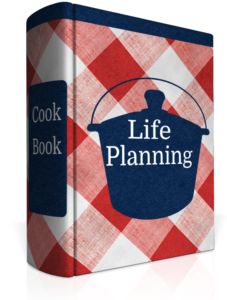
This post is the last in a series on the development of the title of the manuscript, An Explorer’s Guide to Biblical Life Planning: Student Version, on which I am currently working. By working, I mean interacting with my computer. This process is not as straight forward as it was prior to 2009. I am still generating ideas in my head. After my most serious bout with seizures in December, 2009, the ideas have almost always been in the form of visual images. Since I am not an artist, the coins in the realm of communications are words, I must translate the pictures I see into words.

This translation is a multi-step process. I first do a very rough draft in my head. I then mull over that draft several times before sitting down at my keyboard and inputting a more refined rough draft into the memory banks of my computer. I print out a copy of my work so that I can review it away from that machine that beckons me to investigate all the wonderful new reports on education, sports, world events, food and cars that it has to offer.

I usually leave my office, taking the hard copy of my document to review later. I have found if I try to edit the material immediately, I do not find problems or alternative ways of expressing my ideas. I am too invested in what I have just committed to my computer. I must wait minutes, hours or even days before I can truly edit my own work.
Why do I need the printed paper copy of a document to edit? There are several reasons. The first reason is that I am not a digital native. I will admit that, although I consider myself fairly fluent in digitalese, I am still a digital immigrant. In addition, the aging process has taken away some of my reaction time. Even spoken or hand written communications take much longer now than just 7 years ago.
Aging and other health concerns have also caused changes in how I do things. My middle range vision, i.e., computer screens, is deteriorating. If I enlarge the screen type font large enough to easily read it, some documents will not fit on the screen. In addition, the lines of type do not always run straight across the page for me. I get mixed up as to which line I am reading. With my changing vision, I have had to go to two pairs of glasses. One pair for distance vision and up-close “book” reading, and one pair for middle range (computer screen) and reading distance. I tried trifocals, but I couldn’t use them. They gave me severe headaches. Exchanging glasses has quickly become a pain, especially when I forget where I put the other pair of glasses.
This post concentrates on the phrase Student Version. With this phrase I am attempting to identify the target audience of the book. It is intended for mid-to late-adolescents. This phrase actually comes directly in verbal form from my pre-Traumatic Brain Incident days. As far back as 1990, colleges were looking for ways of addressing those traditional “college-age” individuals whom they were trying to attract to come to their institutions. Colleges had to walk something of a tightrope in addressing these individuals. Officially, in the eyes of the law, most of these individuals were not adults. They were still children in the eyes of many of their parents. Many parents were financially responsible for these individuals. Parents also wanted to protect “their children” from the harsh realities of the real world for as long as they could. The “children” were getting ready to leave the nest. They wanted to be on their own as much as possible. So as not to offend the parents or the young people, colleges started using the term “student.” This gave the young folks a sense of freedom, while still not completely off-putting the parents. In the ’90s at college recruitment or orientation days, we talked to parents about “their students.” When we addressed the prospective students, we used the term “students” to give them a sense of maturation. The term may not have completely satisfied everyone in either group. However, it didn’t disgust them either.
As these prospective students engaged in the college selection and preparation processes, there was one question that kept surfacing:

That’s the primary reason for writing this book. I wanted to help prospective students and their parents answer the questions that arise naturally in the processes of selecting, applying to and preparing for college or careers. This book is addressed to the students. I am also working on a second volume, addressed to the parents. I am intending to call it An Explorer’s Guide to Biblical Life Planning: PG Version. The abbreviation PG stands for Parental Guidance. This is not the parental guidance that the movies rating system suggests. The book is intended to provide guidance to parents as their students navigate their paths to college or a career. The PG Verision will contain all the material in the Student Version, but it will contain additional information. The added bonus material is meant to help guide the parents as they work with their students. I will encourage families to work through the common parts of the books together.











































